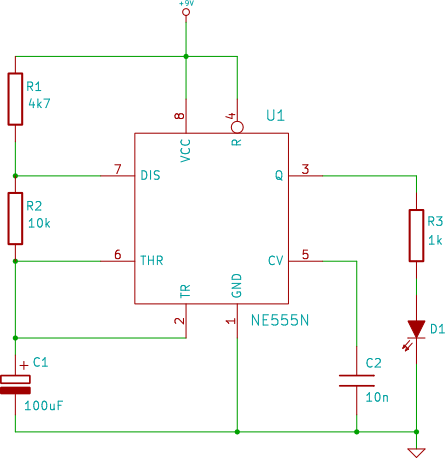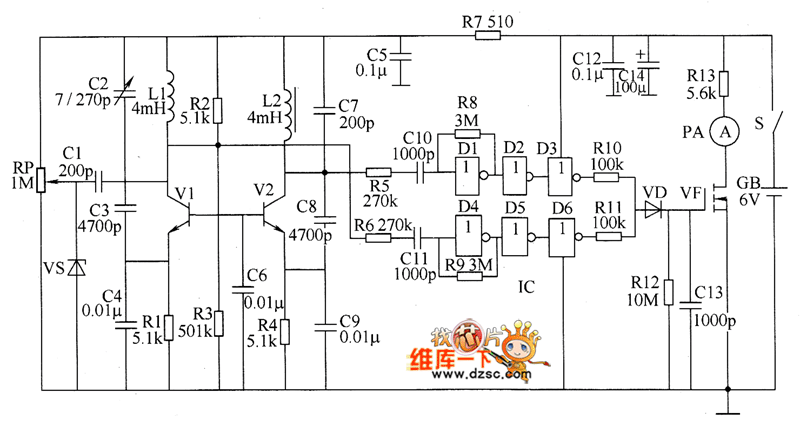
LM3909 Typical 1.5V Flasher Schematic Diagram and Datasheet

The schematic diagram below illustrates a typical 1.5V flasher circuit using the LM3909. The LM3909 is a monolithic oscillator designed specifically for flashing Light Emitting Diodes (LEDs).
The LM3909 flasher circuit operates at a low voltage of 1.5V, making it suitable for battery-powered applications. It is capable of driving one or more LEDs, providing a visual indication through periodic flashing. The circuit utilizes the internal oscillator of the LM3909, which generates a square wave output that controls the flashing rate of the connected LEDs.
Key components of the circuit include the LM3909 integrated circuit, resistors, capacitors, and the LED itself. The resistor values and capacitor size can be adjusted to modify the flashing frequency and duty cycle of the output. Typically, a larger capacitor will result in a slower flashing rate, while a smaller capacitor will increase the flashing speed.
The circuit configuration involves connecting the LED in series with a current-limiting resistor to prevent excessive current flow, which could damage the LED. The output pin of the LM3909 is connected to the anode of the LED, while the cathode is grounded. The timing components, namely the resistor and capacitor, are connected to the timing pins of the LM3909, allowing for precise control over the flashing characteristics.
This flasher circuit is widely used in various applications, including decorative lighting, indicators, and visual alerts, due to its simplicity and efficiency. The LM3909's low power consumption makes it an ideal choice for projects requiring prolonged battery life.The schematic diagram below appears LM3909 Typical 1.5V Flasher circuit. It is known that LM3909 is an oscillator, a monolithic one, which is designed to flash Light Emitting Diodes (LED) 🔗 External reference
The LM3909 flasher circuit operates at a low voltage of 1.5V, making it suitable for battery-powered applications. It is capable of driving one or more LEDs, providing a visual indication through periodic flashing. The circuit utilizes the internal oscillator of the LM3909, which generates a square wave output that controls the flashing rate of the connected LEDs.
Key components of the circuit include the LM3909 integrated circuit, resistors, capacitors, and the LED itself. The resistor values and capacitor size can be adjusted to modify the flashing frequency and duty cycle of the output. Typically, a larger capacitor will result in a slower flashing rate, while a smaller capacitor will increase the flashing speed.
The circuit configuration involves connecting the LED in series with a current-limiting resistor to prevent excessive current flow, which could damage the LED. The output pin of the LM3909 is connected to the anode of the LED, while the cathode is grounded. The timing components, namely the resistor and capacitor, are connected to the timing pins of the LM3909, allowing for precise control over the flashing characteristics.
This flasher circuit is widely used in various applications, including decorative lighting, indicators, and visual alerts, due to its simplicity and efficiency. The LM3909's low power consumption makes it an ideal choice for projects requiring prolonged battery life.The schematic diagram below appears LM3909 Typical 1.5V Flasher circuit. It is known that LM3909 is an oscillator, a monolithic one, which is designed to flash Light Emitting Diodes (LED) 🔗 External reference





